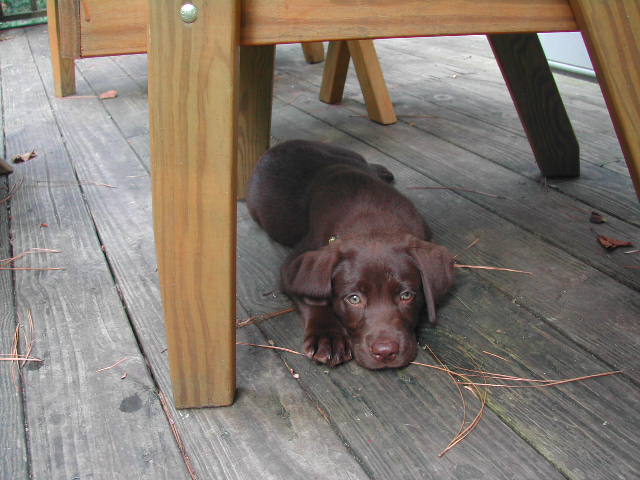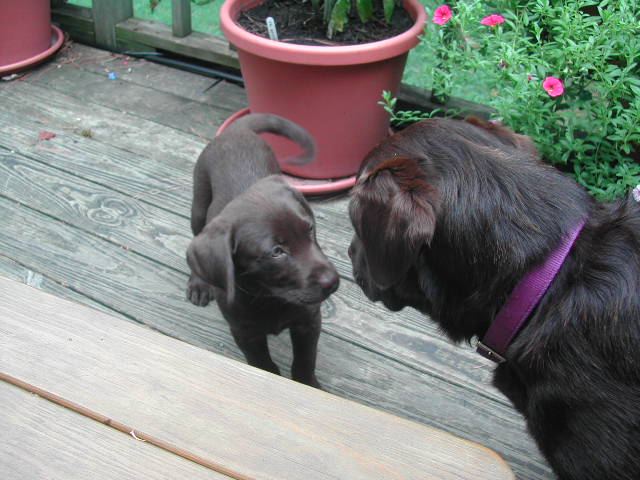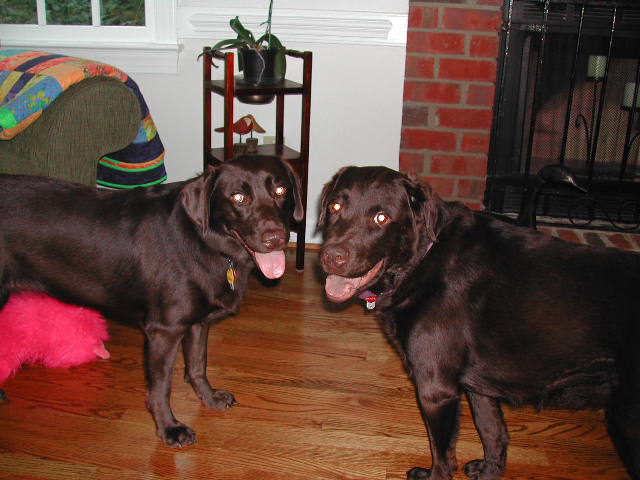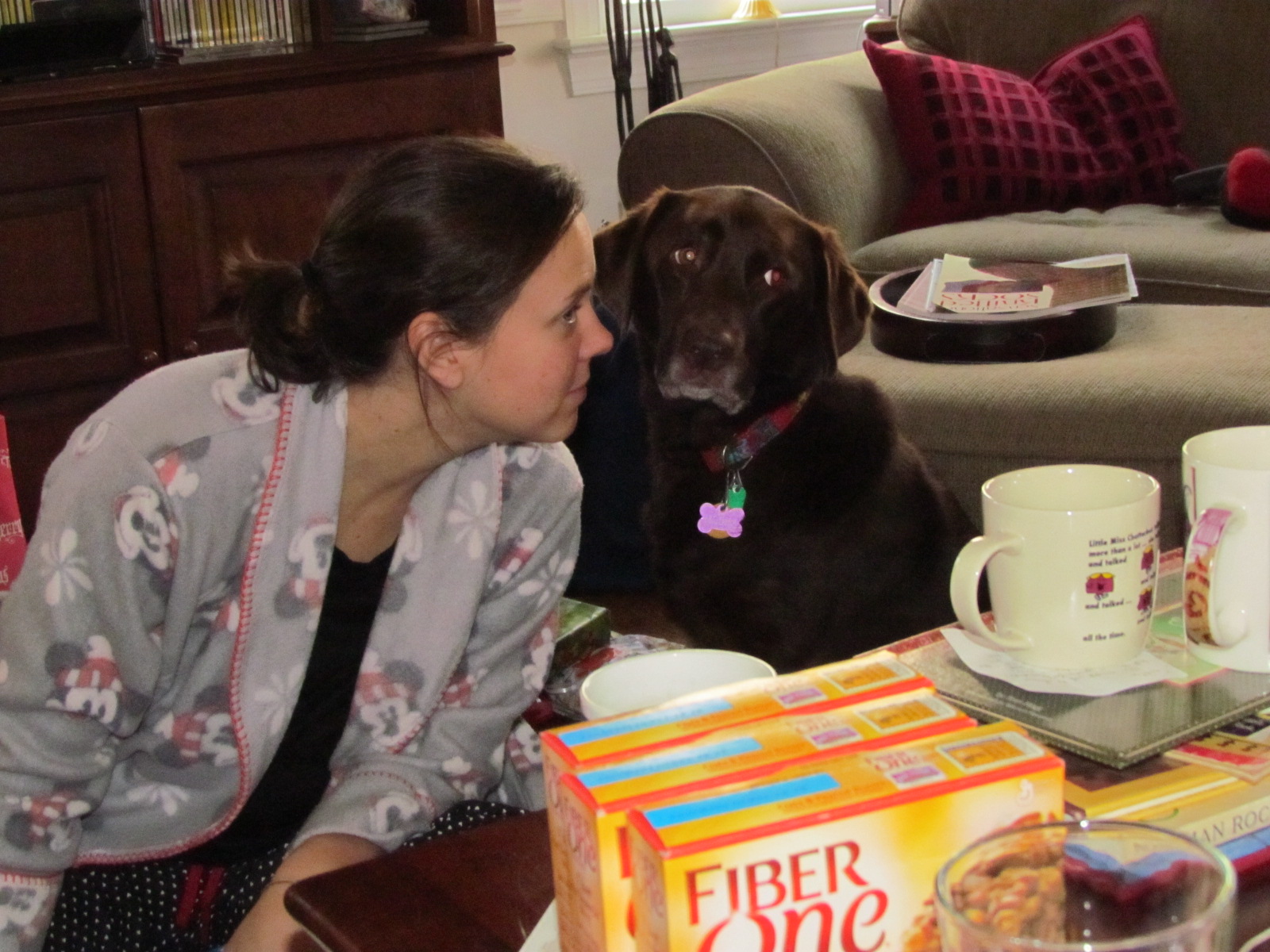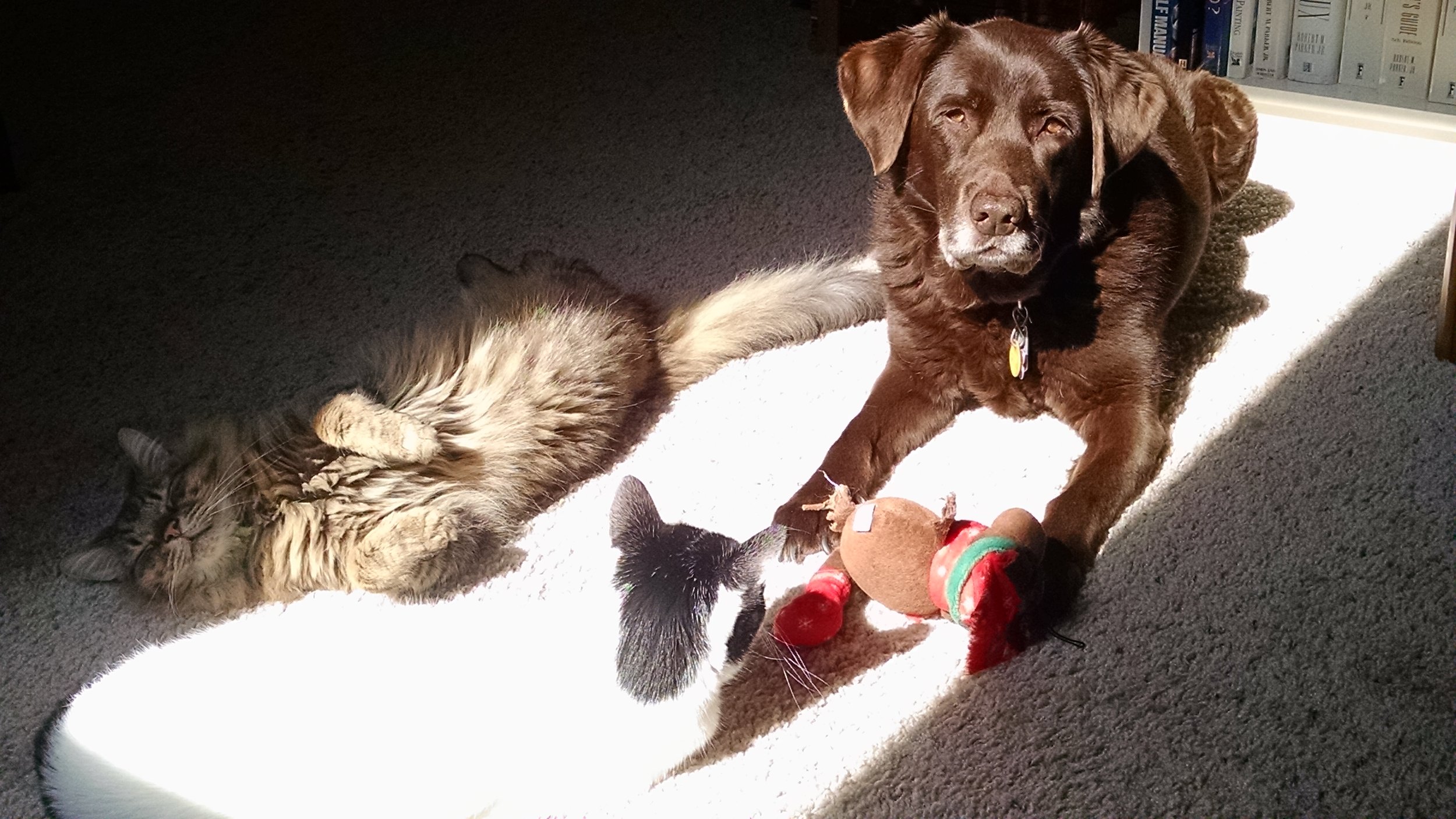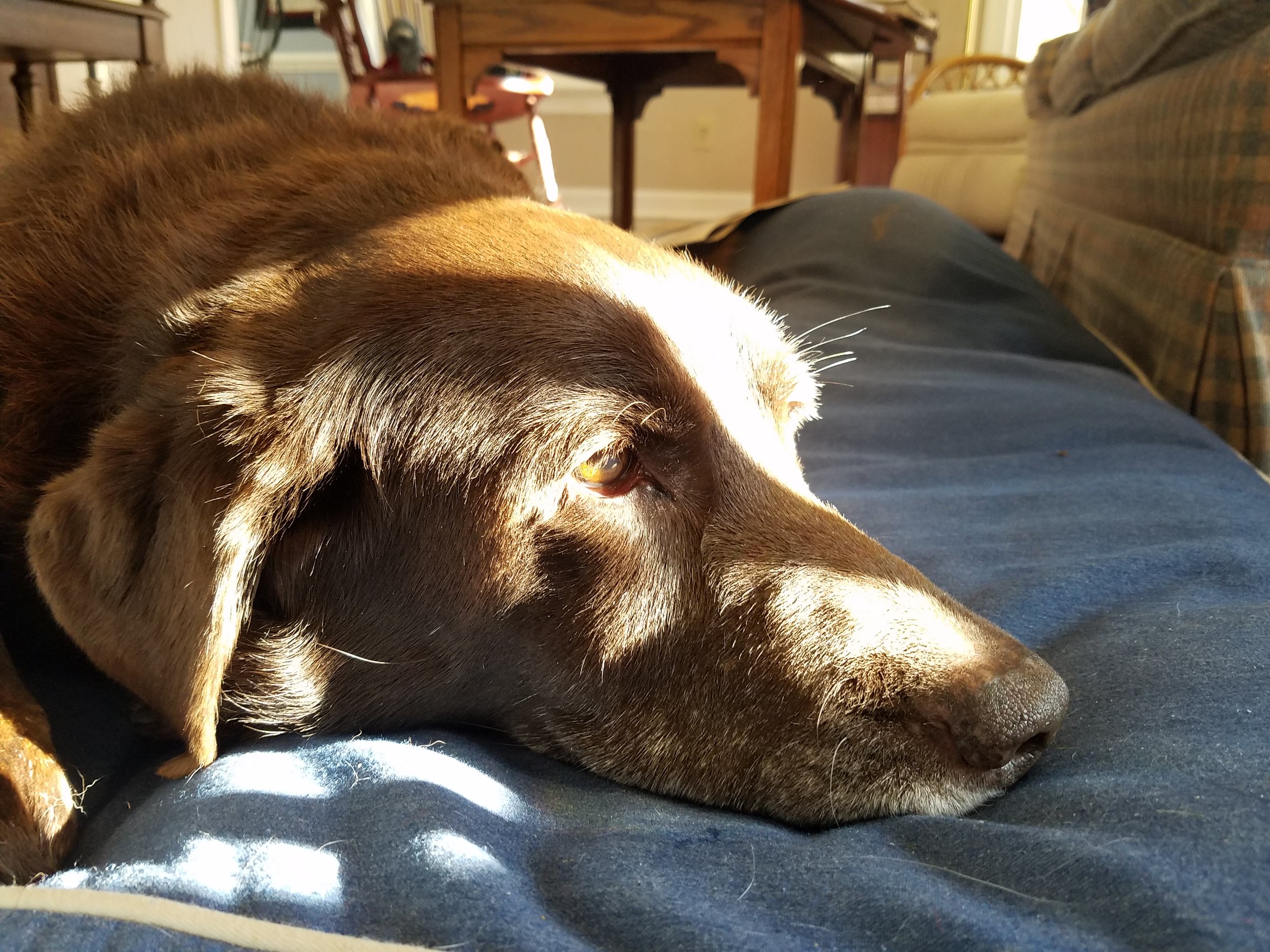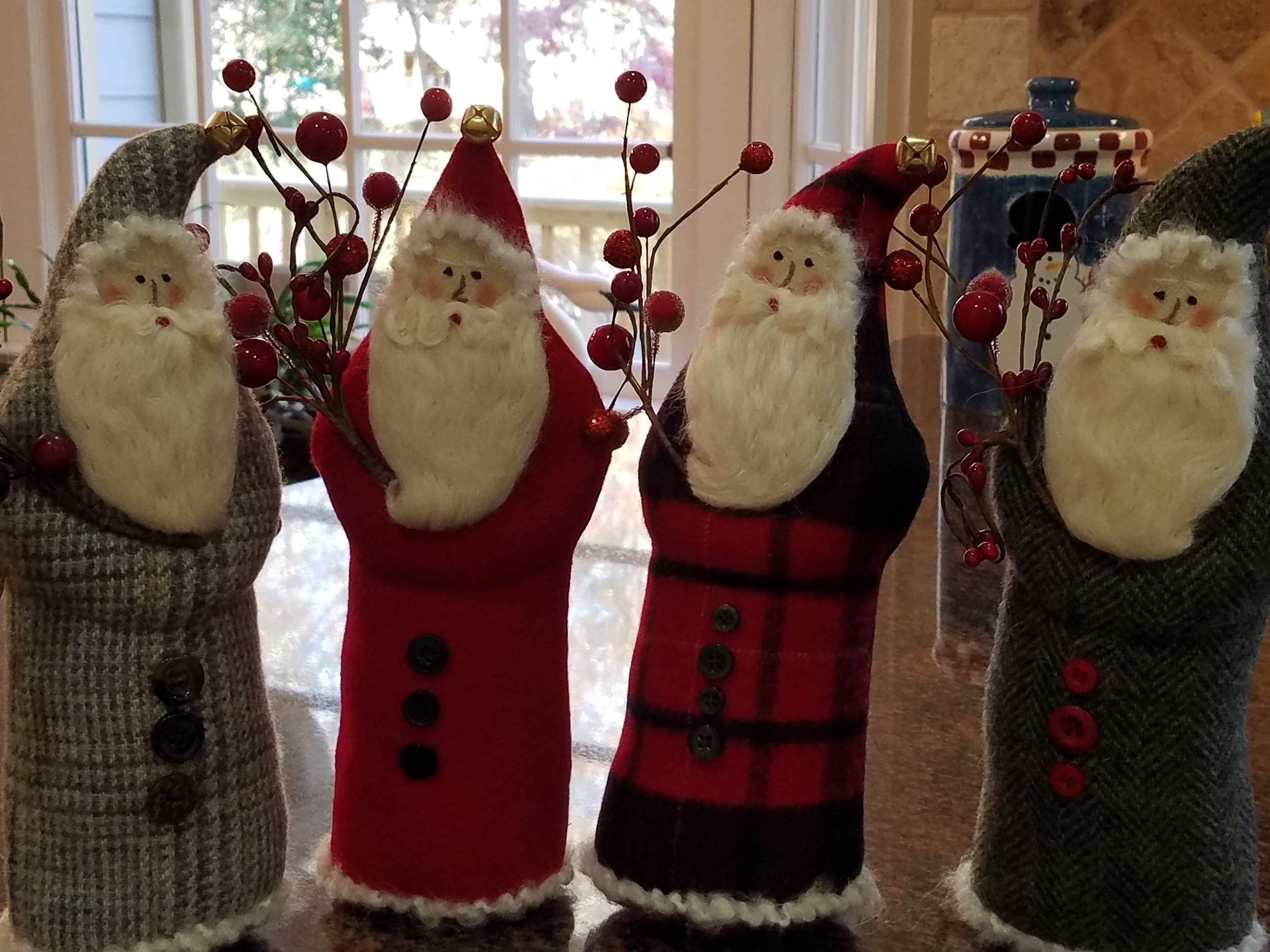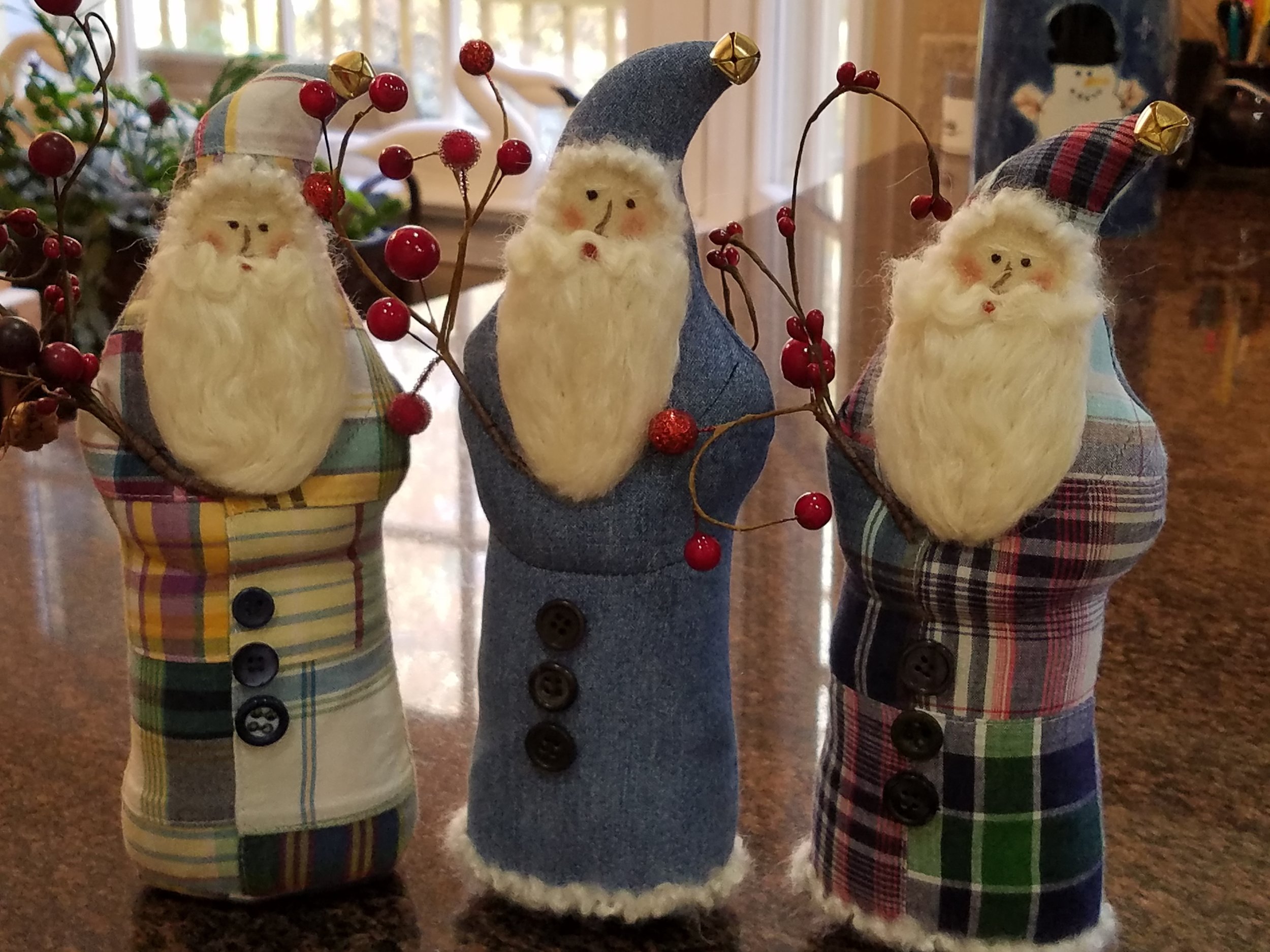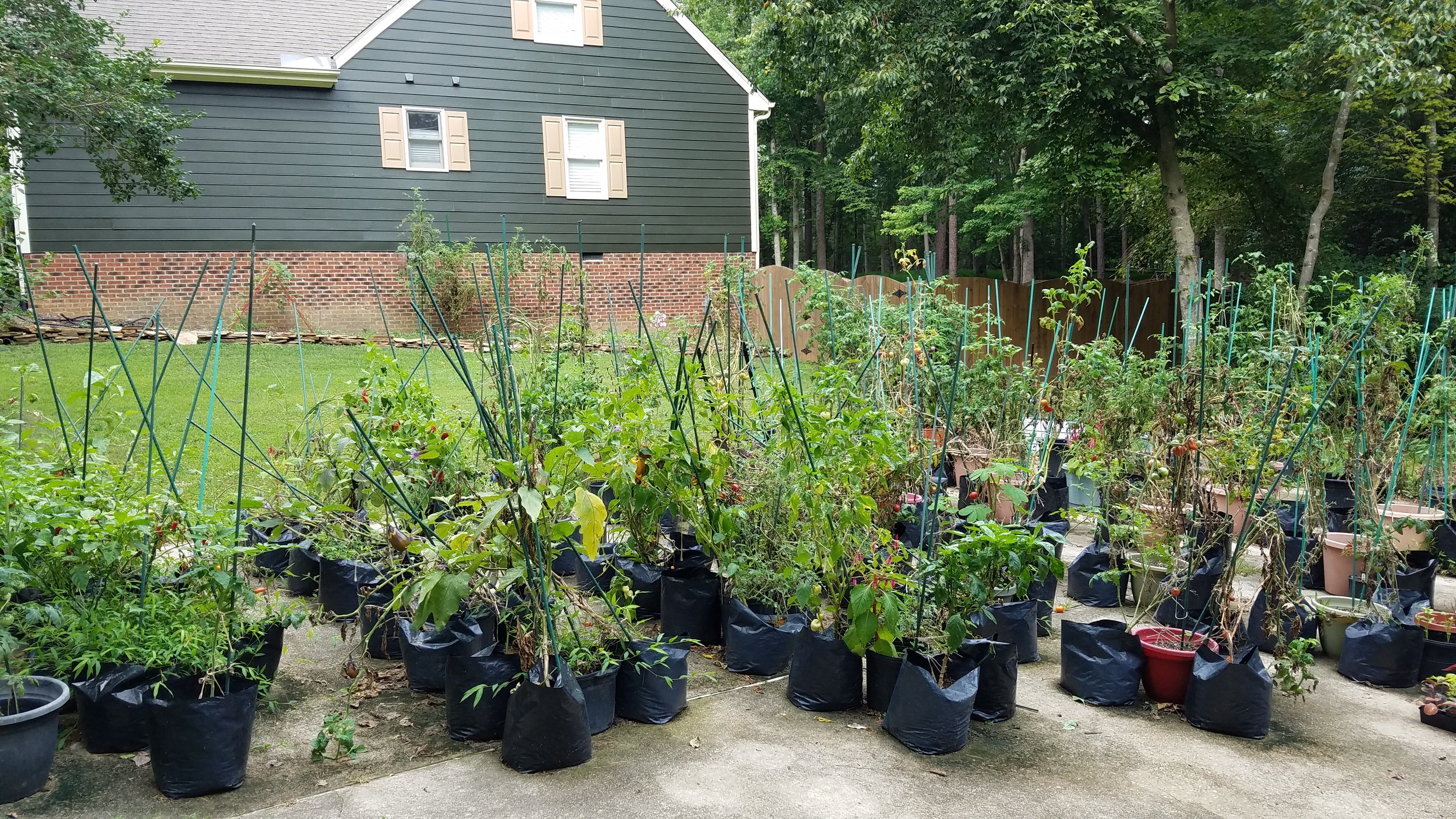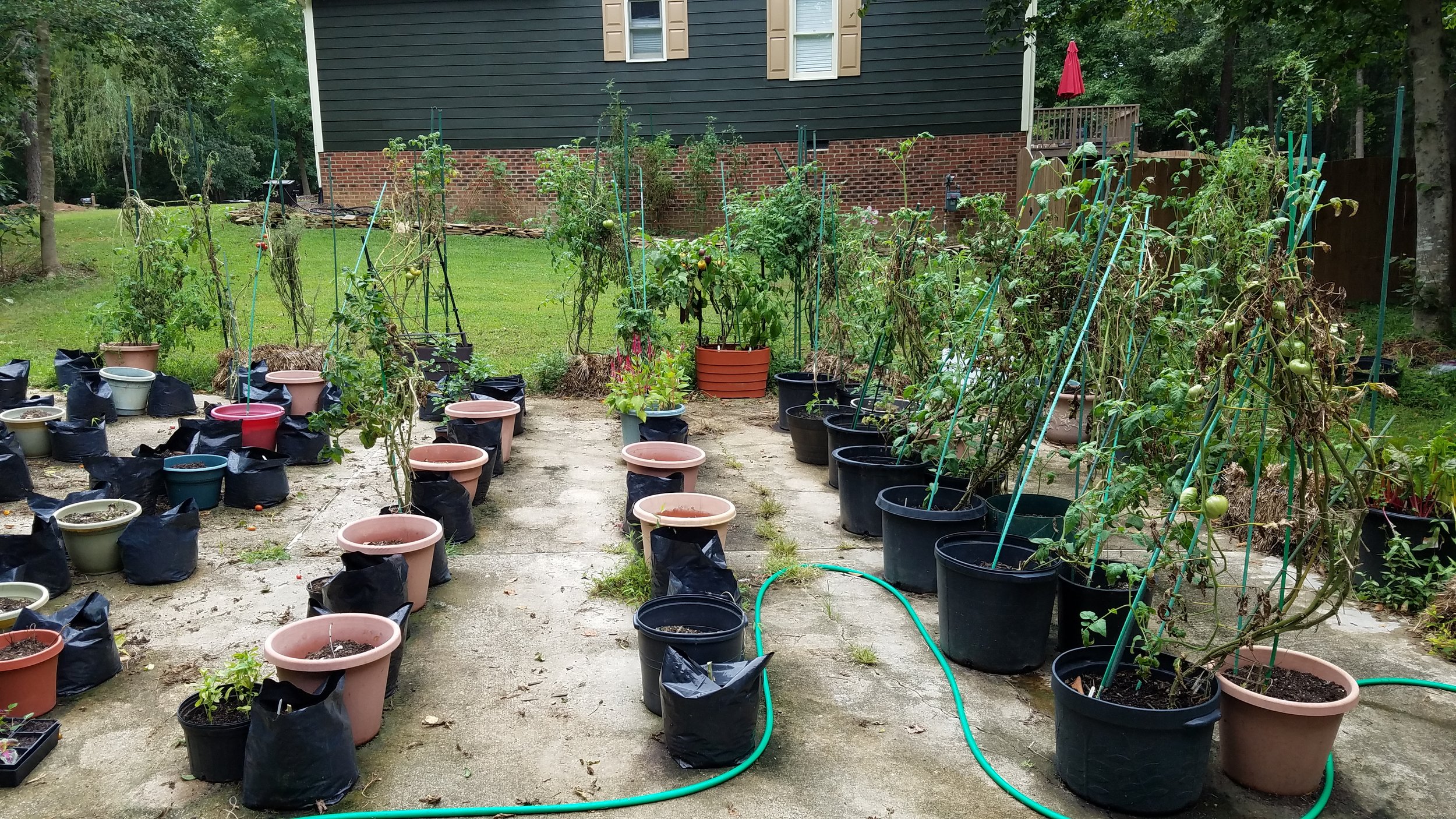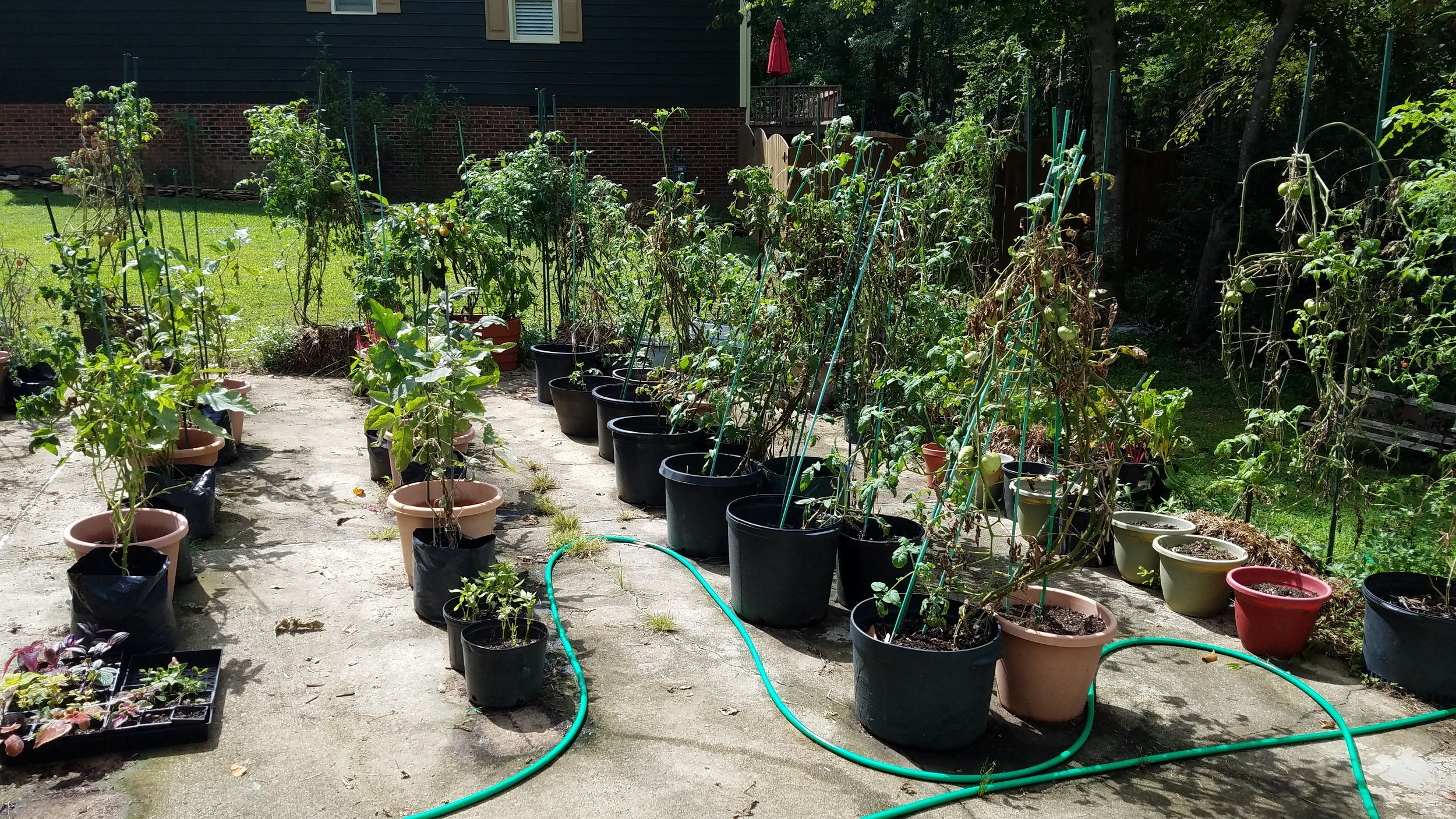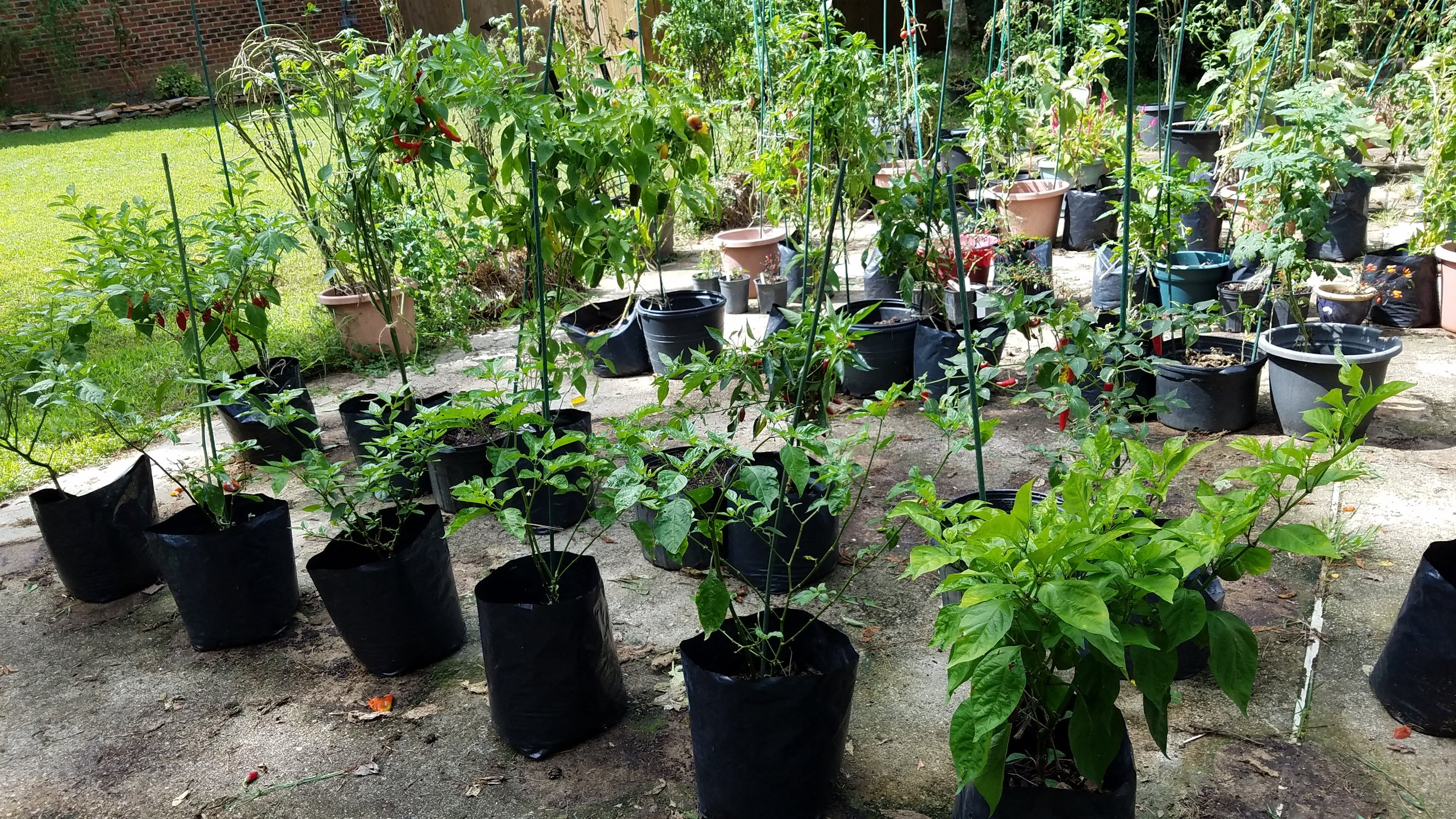Artsy F2 plant 1 - Artsy is my cross between Variegated and Perth Pride. Artsy plant 1 is a lovely plant, with excellent fruit set. The tomatoes are in the 3 ounce range, smooth slightly oblate, and red in color. The flavor is very, very good - clearly better than the Variegated parent, with some of the nice tang of Perth Pride. This is a promising lead.
Artsy F2 plant 2 - This is a bit of a mystery. The young seedling had quite fine foliage, clearly smaller than expected - making me wonder if some Silvery Fir Tree is included in this possibly complex cross. The tomatoes ripened red, and were similar in size to the Variegated indeterminate parent, though with far better flavor. Promising lead.
Sandy F2 - Sandy is a cross between Variegated and the striped dwarf Sarandipity. My single Sandy offspring shows less variegation than the Acey or Artsy plants. Fruit set was very good and the plant was healthy. The tomatoes are in the 3 ounce range, slightly oblate, smooth, and red with faint lighter stripes, giving it a mottled appearance. The flavor is very good, certainly better than either parent. Promising lead
Fishy F2 - Fishy is a cross between Variegated and Iditarod Red - my expectations for this line are modest. The plant has only slight variegation, but was healthy and set lots of fruit. The tomatoes were in the 3 ounce range, smooth slightly oblate, and very tasty - no surprise that it is a red tomato, like both parents. I like the flavor more than either parent, and this is a promising lead
Scotty F2 - My aim in the Scotty cross was to start to delve into some of the E. C Green varieties offered by Livingston in the early 1900s - he was the first to use Honor Bright (a very unusual variety with nearly yellow foliage, white flowers, and tomatoes that go from white to red) as a parent, crossing it with some of the dwarfs of that time to eventually create yellow foliaged dwarfs. Scotty is a cross between a weird potato leaf, yellow leaf variety I found years ago in Turkey Chomp and call Surprise, with Dwarf Scarlet Heart. The offspring of this cross should be very complex - potato and regular leaf, green and yellowish foliage.
(For the Scotty F2 results based on expectations, see further down this report.)
Once the tomatoes ripened, it was clear to me that I mixed some Sandy seed into the Scotty sample, as the variegation patterns and fruit color (light stripes) matched my Sandy results...so mystery solved. See Sandy F2, above, for the description of the ripe fruit and status going forward.
Work toward dwarf paste tomatoes
My work on dwarf paste tomatoes - primarily the Speckly family (my cross of Speckled Roman with Dwarf Golden Heart) - is limited this year. Yet, there is good news to report. The numbers below, and further on, are my reference vial numbers that were assigned to seed sent to me by project volunteers.
Speckly selection 5716 - moderately healthy, very compact dwarf, producing 2-3 ounce paste tomatoes with a nippled end - red in color, and quite flavorful. I'd like to see better production, but it is a good lead.


